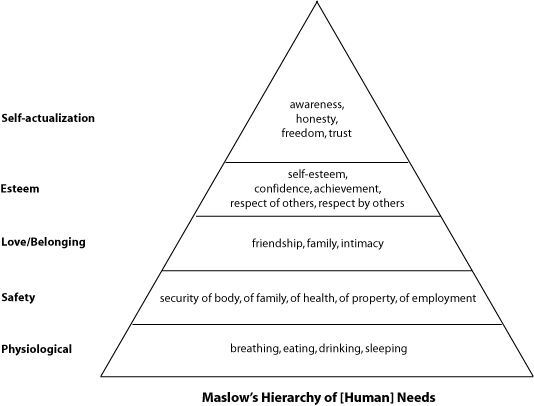Developing a great business ‘culture’ is a relatively new concept that is often written about, discussed and debated.
But, what does it really mean, and why is it important? What’s more, exactly how can you foster its growth and maturation in your business aviation organizations?
Culture Defined
First, let’s look at how the dictionary defines ‘culture’:
- The beliefs, customs, arts, etc., of a particular society, group, place, or time
- A particular society that has its own beliefs, ways of life, art, etc.
- Away of thinking, behaving, or working that exists in a place or organization (such as a business)
In essence, culture is the glue that holds an organization together.
Among many other things that a culture does, it enables each member of a group to understand the performance and behaviors endorsed and valued by the group at large and the organization as a whole.
A positive culture is one in which the individual members of a group can determine the appropriate actions they should take, based upon a keen sense of shared values and principles, rather than depending on something regurgitated from rule books and policy manuals.
A shared culture facilitates alignment within an organization, a state in which everyone is striving to achieve well-defined performance goals and behavioral norms in a highly coordinated manner.
6 Principles to Build and Sustain a Business Aviation Culture
There are many elements of a great, sustained culture in business aviation. Below are six principles to consider:
1. Satisfy the Team’s Basic Needs
Organizational leaders are well-advised to first attend to the fundamental human need for security and survival of the individuals within the organization. Remember the progression in Maslow’s hierarchy of needs (see graphic below)?
Organizationally,we need to be mindful of the physiological and safety-related needs of our individual members before anything else of real substance or sustenance can be achieved.
How many times have you witnessed an organization whose members were driven primarily by fear?
Have you ever experienced a fear-motivated organization that was a pleasant place to work, or where performance was sustained at very high levels? In all my decades of practice, I am yet to find the first one.

2. Practice and Play Like a Team
After satisfying those basic needs, we are then ready to appeal to the hearts and minds of each individual within the organization.
First, decide if you want a loose collection of individuals, each marching to the beat of his or her own drum, or a highly integrated, interdependent organization where the sum of the parts produces outstanding results that could never be achieved by any one of the individuals. I urge you to choose the latter.
We know that business aviation is, without a doubt, a team sport. There’s no one person who candeliver the ultimate travel product without the contribution of many team members, both within your organization and outside of it.
3. Define Where You’re Going
In order to marshal your organizational forces in an aligned manner, the next series of actions that leaders must engage is to define:
- the organization’s reason for being
- where it is going
- how its objectives will be accomplished
- the values that the organization will operate by
- required leadership competencies
I realize that’s quite a task! But doing all of these things will help you define your organization’s vision, mission, values and leadership competencies.
Once you sit down with your business aviation leadership team to define these four cornerstones, they must be effectively communicated throughout the organization and embraced by every one of its members.
Everyone must understand where the organization is going, how it is going to get there, and what he or she is personally responsible and accountable for achieving—all of which will contribute to the consistent, sustained success of the organization.
4.Communicate Often
One of the underlying, critical success elements is, of course, communication. This is a primary responsibility of the leader and the leadership team.
Too much communication is simply not possible. When you think you have communicated all that you can, start over and communicate some more!
Building a great, fun, high-performance culture is a lot like leading a sports team. Your organization has a number of very talented people. As their leader, your job is to provide direction and resources for your team members, while removing any barriers that might exist.
Once you’ve done that, get out of their way and let them do their jobs! You must also make the commitment to lead rather than do. Do you often see a sports team’s coach inserting himself into the middle of the action on the field? Not hardly.
5. Align the Business Aviation Culture with Corporate
The highest performing business aviation organizations have operating cultures that are completely aligned with the host organizations they support.
They understand the host organization’s core activities/business as well as they do their own cultural norms and expectations. Remember: the aviation organization is not an external appendage; rather it’s part of the core functionality of the host organization.
6. Train and Develop your Team
In order to sustain this high level of performance and cultural alignment–both within the aviation organization and with the host organization–you and your team members have to be carefully selected and continuously developed. It almost goes without saying that technical training is required on an ongoing basis.
But remember that training ensures that one has the skills to perform today’s job, and development is preparing for tomorrow’s responsibilities and contributions.
The aviation organization’s leadership team has the responsibility to mentor each of the team’s members. Talent must constantly be identified, developed and groomed for tomorrow’s opportunities and challenges.
Creating a great culture will result in a wonderful place to work, one that’s enjoyable,fulfilling, rewarding and fun.
Following these foregoing six principles will serve you well. Please remember, however, that as is the case with most things in life, less is more.
Your Turn
What successes have you had as a result of building and sustaining a great culture in business aviation? We’d love for you to share your wins with our Gray Stone Advisors’ community.
